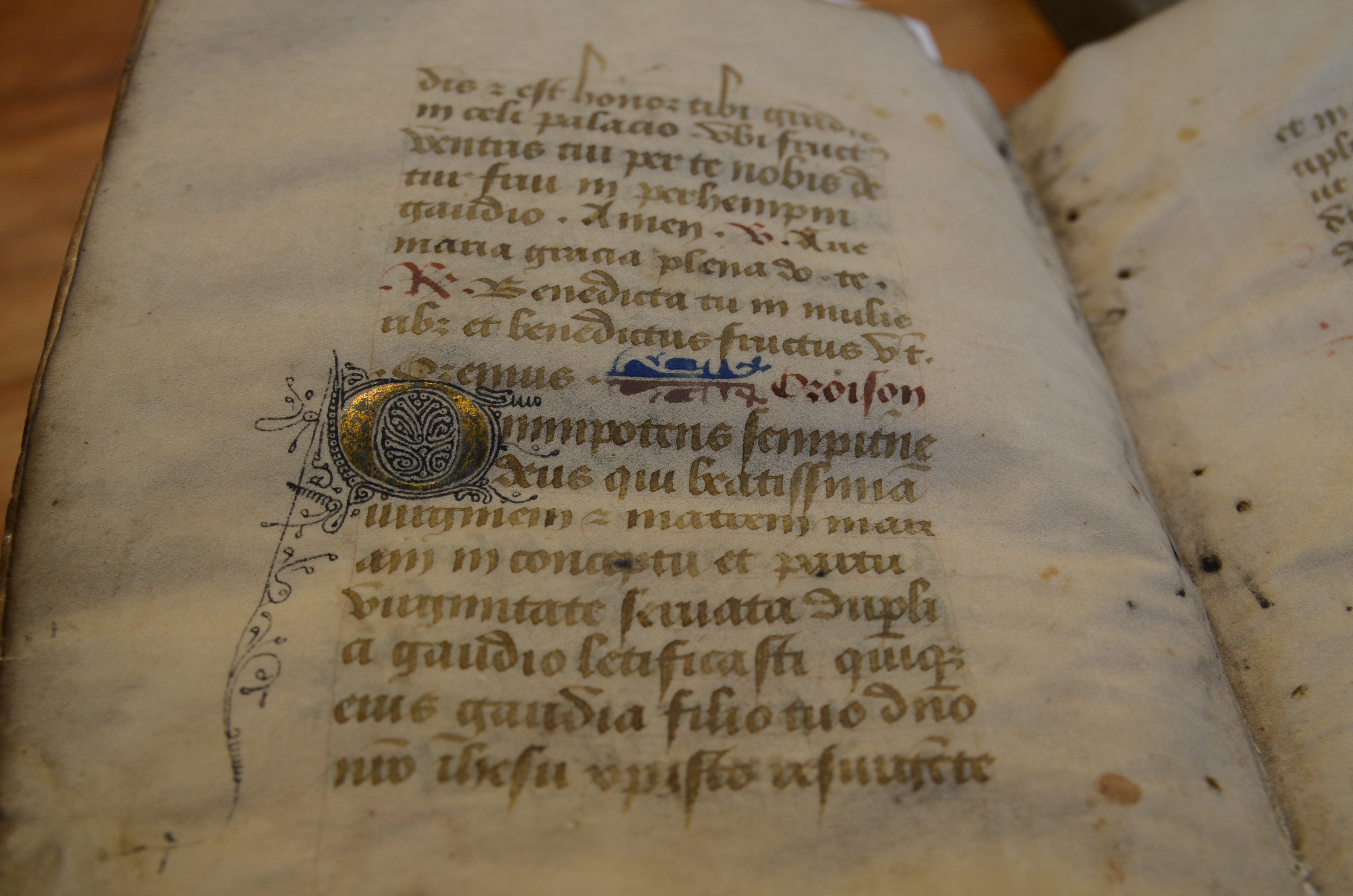The funny thing about doing undergraduate research on a 500 year old book is that I was most definitely the only undergraduate on campus doing research this semester on this particular 500 year old book. You’d think that this kind of goes without saying, but the notion of “I’m the only person around working on this weird niche thing right now” is something that you only thing of in an abstract way. Then something happens and all of a sudden you’re stranded on academic island pretty much by yourself. Like that time I tried to Google an answer to how many lines of text there are on each page of the Hargrett Hours. I had my hands on the keyboard before I realized that I am writing the information that will appear in Google search. I most definitely put my head in my hands and stared at my laptop before I pulled up the PDF of the book to start counting lines.
The HH 1.0 class from Fall 2016 did the dirty work that allowed me to write the codicology report, and my official response to their work is that they did an excellent job. I read all of the reports that the class created, but my main focus was the codicology group and their report. They gathered and processed a huge amount of data in a very short amount of time. I’m proud of them and I never even met any of them. When I was doing my own data gathering this semester I didn’t find any major conflicts, and I was mainly just adding to the pool of data and then creating the formal report to go online. A good portion of my time was spent sitting down with the manuscript and going through it page by page to find any details that HH 1.0 may have missed. During times when I wasn’t able to access the physical book I used the scans from our digital facsimile as a quick reference. It was tedious, to say the least, and I had to go through an informal practicum style “exam” before I was ever allowed to handle the book on my own without direct supervision. Then I had to take that information and make a narrative out of it.
The story goes like this: the Hargrett Hours was originally created and bound in Paris during the fifteenth century, and the book made its way to Edinburgh, Scotland by the late nineteenth century. Sometime in the intervening 400 years various pages and pieces were intentionally cut out of the manuscript and most likely sold piecemeal. We believe that it was during this time period that the book was roughly bound back together using the stab-stitching method, which is what created those small holes that are visible on every page near the spine. After the book came into the possession of a Mr. William Rae Macdonald in Edinburgh it was somewhat repaired, pieced back together with tape, and bound into its current binding. The book was eventually put on the market sometime in the mid-twentieth century and made its way into UGA’s collections and is now used mainly as a teaching and research tool.
Creating the formal codicology report was the part of the project that was 100% on me. The idea was to take the data that HH 1.0 and myself had collected and turn it into something like a nonfiction narrative (but with charts!) that would be readable to somebody totally unfamiliar with the Hargrett Hours. It turns out that there’s no guide, no standard, no MLA format for how to write a lengthy codicology description for a medieval manuscript. After stumbling around in the dark for a while, looking at half a dozen examples, and I think about six or seven edits later, I was able to write a report that effectively summed up a huge amount of work and serves as a primer to our book.
